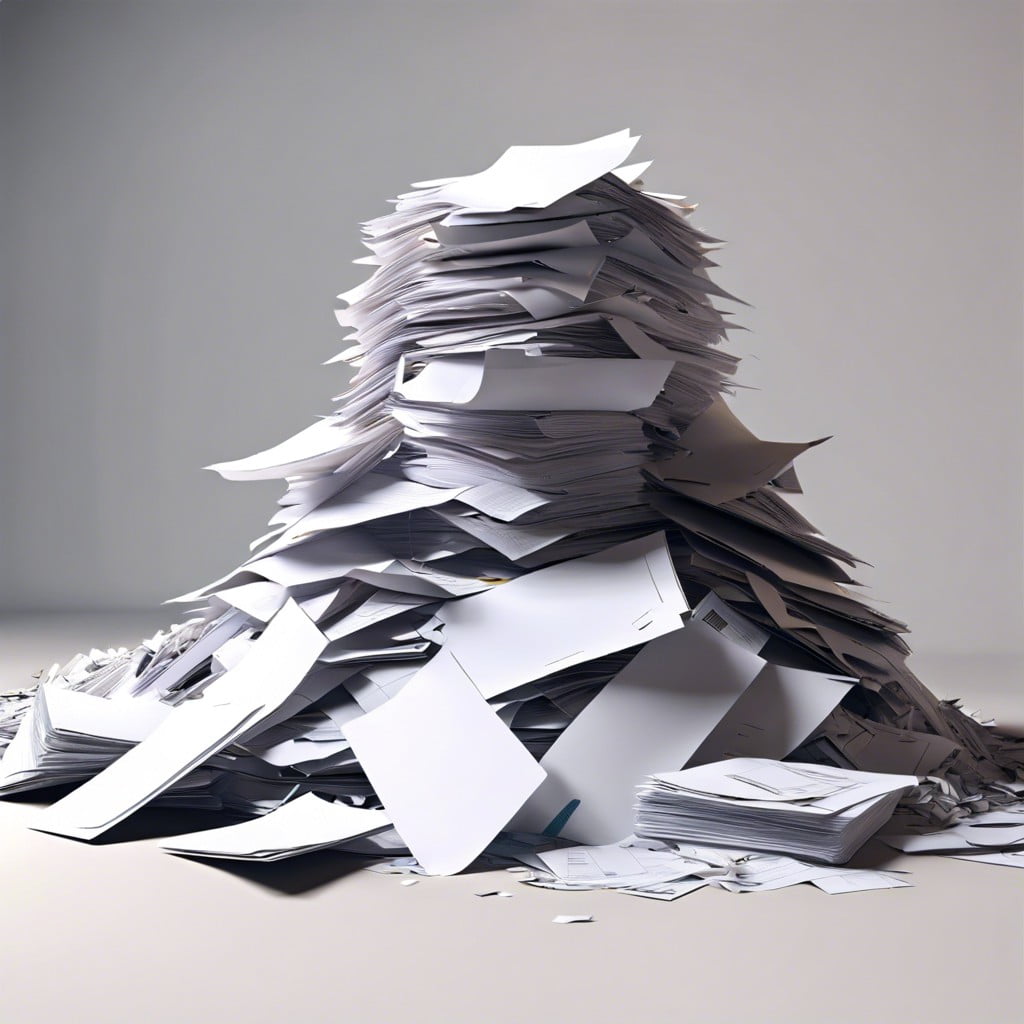Learn how to declutter paperwork effectively with simple steps to reclaim your space and sanity.
Key takeaways:
- Assess the volume of your paper clutter
- Create a sorting system: keep, recycle, shred
- Designate a space for incoming papers
- Go digital: scanning and digital storage solutions
- Implement a regular decluttering schedule
Assess the Volume of Your Paper Clutter

Start by gathering all your papers in one spot. This might seem daunting but imagine it’s a paper reunion, and everyone’s invited!
Check different areas where paper tends to hide. Think about desk drawers, kitchen counters, or that infamous junk drawer. Make this a treasure hunt for stray papers!
Estimate the amount of each type of paper: bills, receipts, manuals, etc. This visual bulk assessment will give you a clear picture of what categories you’re dealing with. Yes, it’s a paperwork party, and now you know who the main guests are!
Finally, understand what’s essential. Not all documents hold the same value. Some you need to keep for longer periods due to legal or financial reasons. Knowing the difference will streamline the next steps of your decluttering journey. Welcome to Paper Sorting 101!
Create a Sorting System: Keep, Recycle, Shred
Decide which papers are worth keeping. Vital documents like birth certificates, marriage licenses, and tax returns should be filed securely. Non-essential items such as old receipts or paid bills can generally be recycled, unless needed for warranties or tax purposes.
For recycling, ensure any personally identifiable information is removed to safeguard your privacy. Shredding is best for sensitive documents like old bank statements and medical records to prevent identity theft.
This sorting system not only clears physical space but also reduces mental clutter, making it easier to manage your remaining paperwork efficiently. Keep an eco-friendly mindset by recycling as much as possible, benefiting both your home and the environment.
Designate a Space for Incoming Papers
To avoid paper pile-ups, designate a specific spot where all incoming documents—like mail, receipts, kids’ school papers—are immediately placed. This could be a tray on your desk, a basket in your entryway, or a drawer in your kitchen.
Make this area highly visible and accessible. This prevents papers from being scattered around your home, which can lead to lost items and additional stress. Think of this spot as the inbox for your home office; nothing should bypass it!
Labeling different sections of your designated space for various categories (bills, personal letters, school notices) further streamlines the process. This simplifies finding what you need when you need it and makes the next steps of processing these papers much more straightforward.
By establishing this simple habit, you’ll maintain a clearer, more organized home environment—your future self will thank you every time you’re not frantically searching for that misplaced important document!
Go Digital: Scanning and Digital Storage Solutions
Embrace the future by trading paper for pixels! Transitioning to a digital archive not only clears physical space but also simplifies document retrieval and boosts security. Here’s how you can make the switch effectively:
– Choose Your Scanner: A reliable document scanner is your new best friend. Consider models that can handle multiple pages and offer high-resolution outputs.
– Select Your Storage: Decide between cloud storage services like Google Drive, Dropbox, or external hard drives. Cloud options provide accessibility from anywhere, while external drives offer control and privacy.
– Establish Filing Rules: Just like a physical file cabinet, create clear digital folders and naming conventions. Consistency is key to avoid digital mess!
– Set Up Backups: Protect your digital documents from digital disasters by setting up automated backups. This way, you won’t lose anything even if technology decides to throw a tantrum.
Transitioning to digital documents is like swapping your bulky filing cabinets for a sleek, invisible vault that you can carry in your pocket—well, sort of!
Implement a Regular Decluttering Schedule
Staying ahead of the paper pile-up requires consistency. Choose a day each week or month dedicated to sorting through new and old documents.
Link this routine to another regular activity, like paying monthly bills or Sunday meal prep, to make it easier to remember.
Set a timer for 15 to 30 minutes for these sessions. Short, focused bursts of organizing prevent fatigue and make the task less daunting.
Track your progress. Celebrating small victories, such as emptying a drawer or digitizing a stack of papers, can boost motivation.
Keeping up with your schedule ensures that paperwork is manageable, keeps your space tidy, and reduces stress.
Related Stories
- Effective Methods to Declutter Paper: A Comprehensive Guide
- Organizing Personal Documents: Tips for Efficient Filing and Storage
- Minimalist Organization Ideas: Simplifying and Streamlining Your Possessions
- Declutter Office: Simple Steps to a More Organized Workspace
- Organizing for Productivity: Boost Efficiency in a Streamlined Workspace